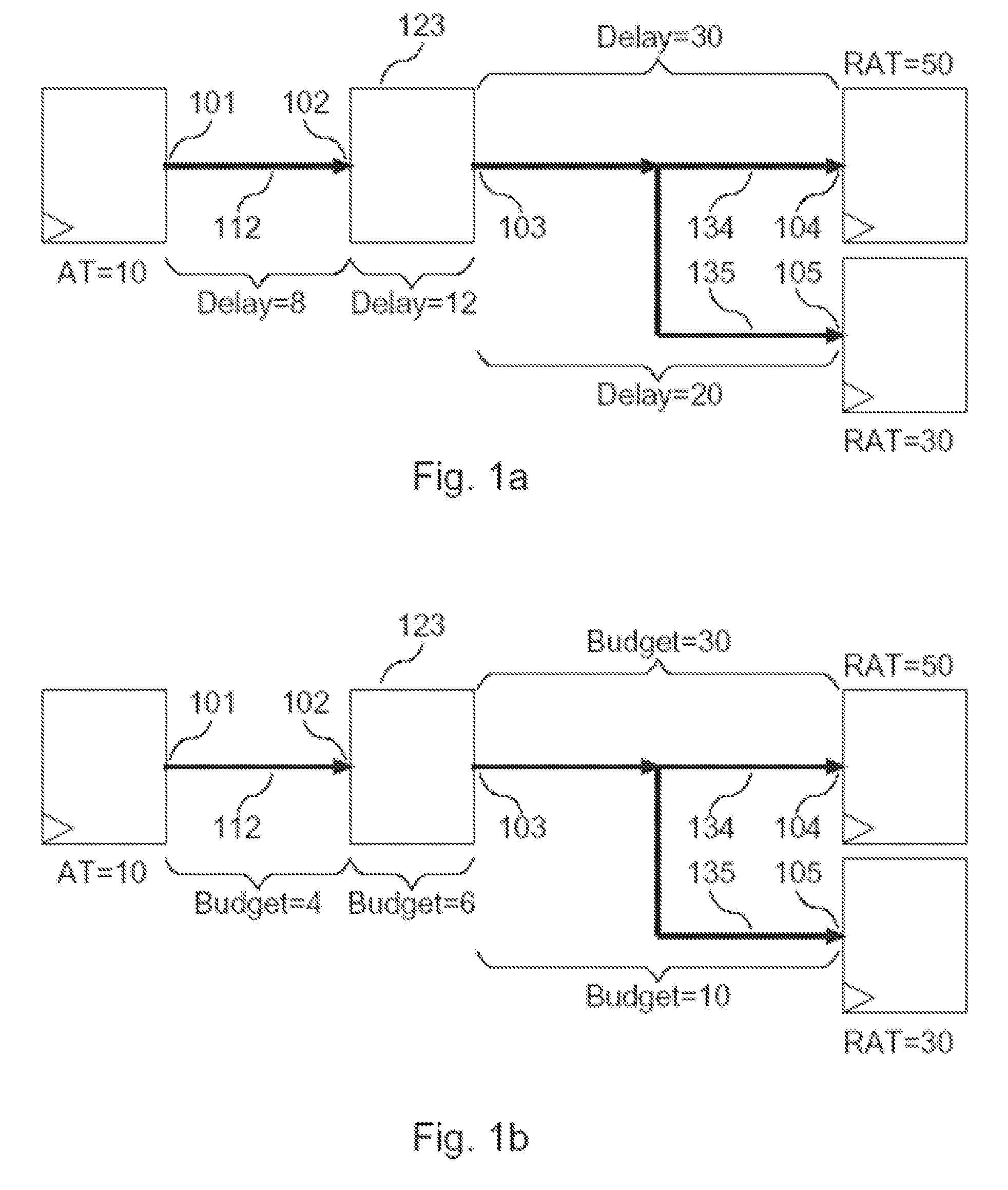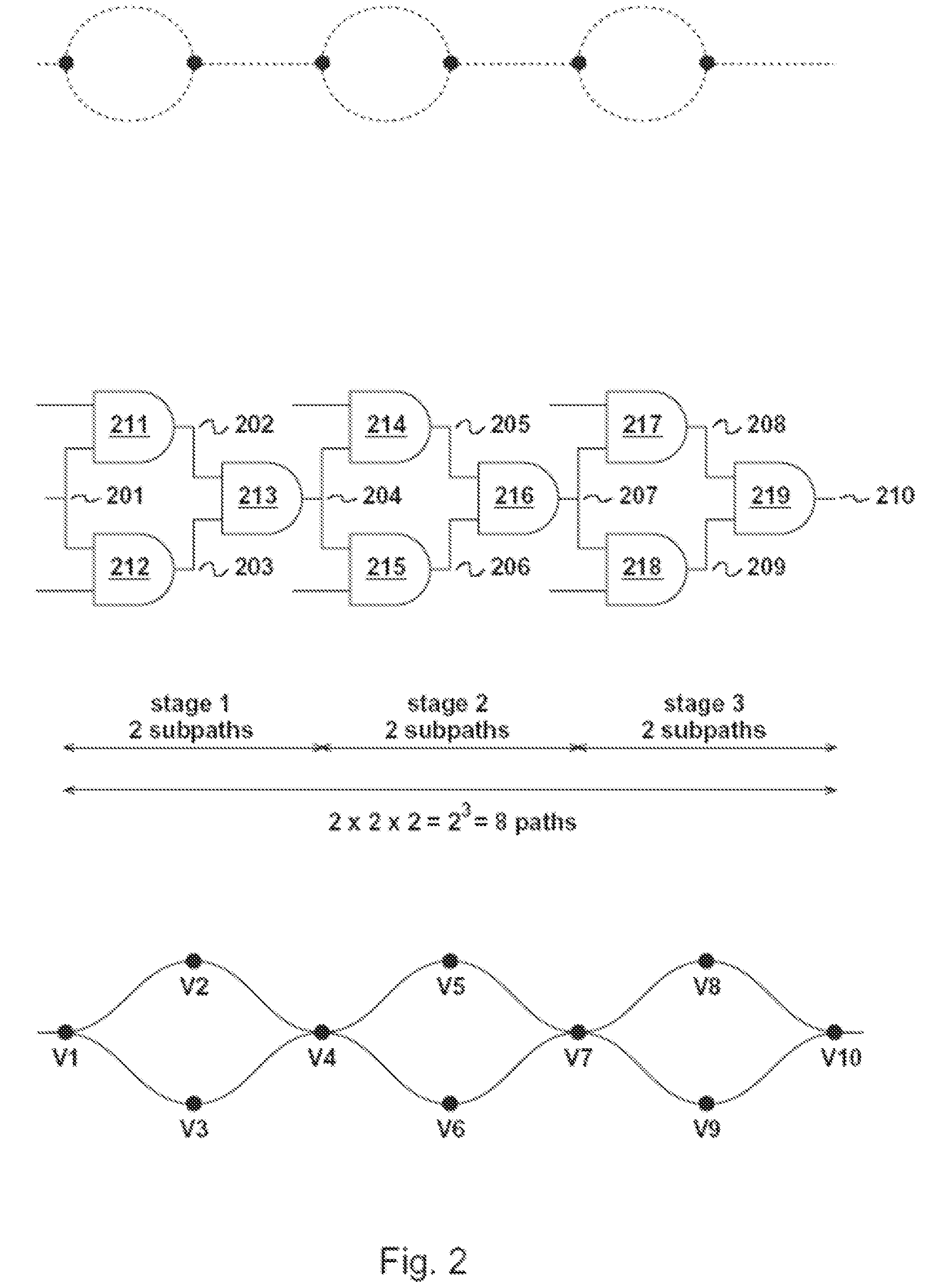Delay Budget Allocation with Path Trimming
a technology of delay and budget allocation, applied in the field of delay, can solve the problems of increasing methodology, impracticality, and only working properly of devices, and achieve the effects of increasing costs, impracticality, and increasing costs
- Summary
- Abstract
- Description
- Claims
- Application Information
AI Technical Summary
Benefits of technology
Problems solved by technology
Method used
Image
Examples
example 1
[0089]FIG. 7 includes the delays “D(e)” and delay budgets “B(e)” of an example in accordance with one embodiment. In this example, Dmin(e)=0 is assumed for each timing edge e.
[0090]First, process Backward is executed for each timing node (Line [400]). When v=V1, there are no incoming edges. Hence, Bset(V1)={(10,0)}. When v=V2, the initial value of Bset(V2) is Ø since there exists an incoming edge e=(V1,V2)=E12. Let u denote the head of this edge, which is node V1 (Line [504]). Execute Backward(V1) (Line [505]). Since node V1 is already visited, it simply comes back without doing anything (Line [500]). Set (SB,TB)=(10,0), which is the only element in Bset(V1) (Line [506]). Since Dmin(e)=0, SB is not updated, and remains 10 (Line [508]). Since D(E12)=8, TB becomes 0+(8−0)=8 (Line 509). Bset(V2) is now {(10,8)} (Line [510]). Since there is only one element in Bset(V2), nothing is done from line [513] through [527]. Similarly, Backward procedure gives Bset(V3)={(10,20)}, Bset(V4)={(10,5...
example 2
[0093]FIG. 8 illustrates an example in accordance with one embodiment. In this more complex example, it is also assume Dmin(e)=0 for each timing edge e. The pairs of numbers surrounded by parentheses represent the results of backward or forward tracing, as appropriate. Among them, those attached to timing nodes V02, V01, and V03 represent the contents of Bset(v) after applying Backward(V03), and those attached to timing nodes V04, V05, V06, V07, V08, and V09 represent the contents of Fset(u) after applying Forward(V04). A pair of numbers struck through, such as at node V08, represents a trimmed backward or forward path after applying path trimming (lines [513] through [527] in FIG. 5 and lines [613] through [627] in FIG. 6). Note that there are only 2 pairs at V04. Without path trimming, there would normally be 4 pairs. There are only 2 pairs due to the path trimming at V08 and V04. Since node V04 uses the results of node V08, the path trimming has a multiplying effect. When the siz...
PUM
 Login to View More
Login to View More Abstract
Description
Claims
Application Information
 Login to View More
Login to View More - R&D
- Intellectual Property
- Life Sciences
- Materials
- Tech Scout
- Unparalleled Data Quality
- Higher Quality Content
- 60% Fewer Hallucinations
Browse by: Latest US Patents, China's latest patents, Technical Efficacy Thesaurus, Application Domain, Technology Topic, Popular Technical Reports.
© 2025 PatSnap. All rights reserved.Legal|Privacy policy|Modern Slavery Act Transparency Statement|Sitemap|About US| Contact US: help@patsnap.com



